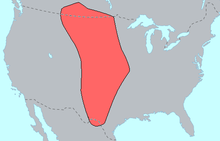
Browning, Montana is home to the Great Plains Indian Museum which covers all plains tribes. The list includes Blackfeet, Arapaho, Assiniboine, Cheyenne, Comanche, Crow, Nez Peirce, Lakota, Sioux, Ojibwa, and Apache. The museum exhibits are owned by the United States Department Of The Interior and no pictures are allowed. Even the map showing where each tribe came from was off limits. The map above gives their range, but not the individual tribes location. I got the map on wikipedia. Not hard to tell we are in buffalo country.
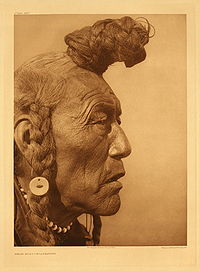
Bear Bull is a Blackfeet Indian. His image was also taken from Wikipedia where they refer to Blackfoot, rather than Blackfeet. The Museum has an absolutely beautiful collection of Plains Indian clothing, their craftsmanship in building decorative tipi’s, buffalo skin boats, drums, sticks, racks, back rests, the many items that can be made with buffalo hide. It explains their religious rituals and especially the decorative clothing, saddle cloth, saddles and beaded quivers, toys, baskets, papoose carriers and feathered headdresses. The bead work is stellar, made from the tiniest glass beads and it seems a shame that we are unable to share it. On one side of the Museum is a working artists gallery.

Ernest Marceau gave permission to photograph his work. I liked this water color.
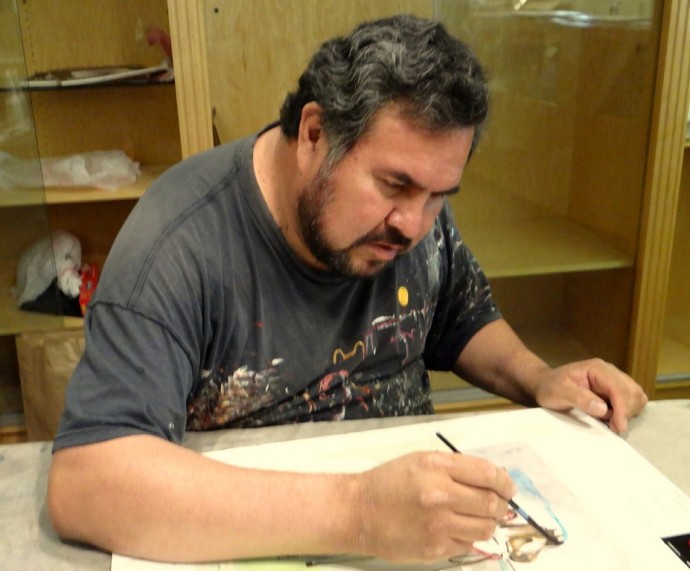
Ernest paints watercolors from memory. He doesn’t copy from a picture. He is Blackfeet. He also works in oil. At the Heritage Center across the street from the museum, he has paintings for sale in decorative wooden frames he makes to go with his paintings.
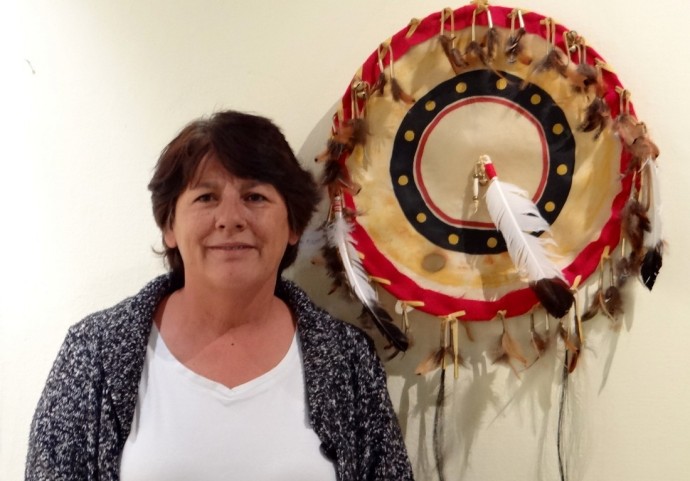
Stacey Gilham Keller displays and works at the Museum Gallery. This shield is her work. She likes to do masks and pony sticks.
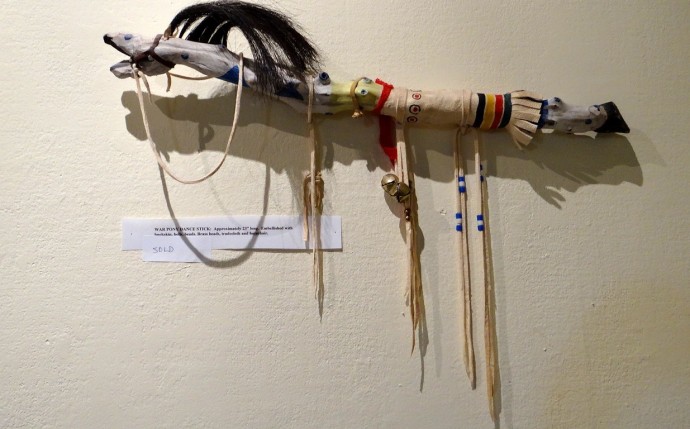
She takes inspiration from the size and shape of a piece of driftwood she finds. It is decorated with horsehair, a bridle, buckskin and bells.
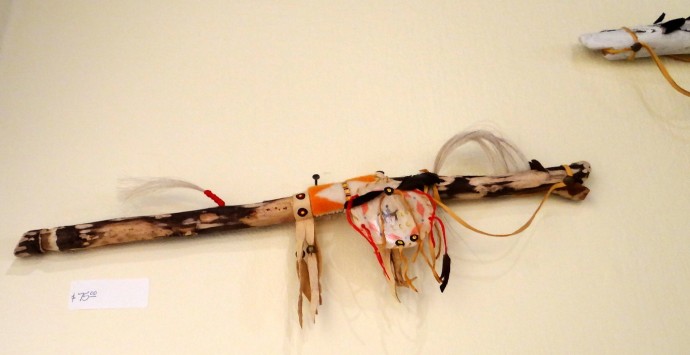
The sticks are affordable and you know it was crafted by a Native American and not mass made in China.

I liked her pony sticks and bought this one. Modern Indian Arts don’t compare to the quality of items in the Museum where time and experience gave the old timers an edge. This museum is well worth the stop and very educational. It explains the dances, customs, how things are made, the knots used, materials used. Really nice. Across from the museum is the Blackfeet Heritage Center and Gallery.

An installation near a resting spot with picnic tables was open to photography. The pieces are steel.
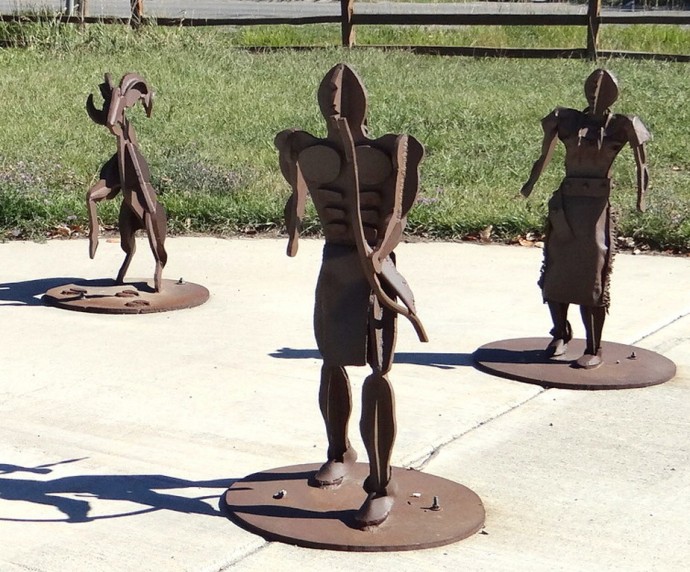
Animals and people arranged in a circle with the Medicine Man the center of attention.
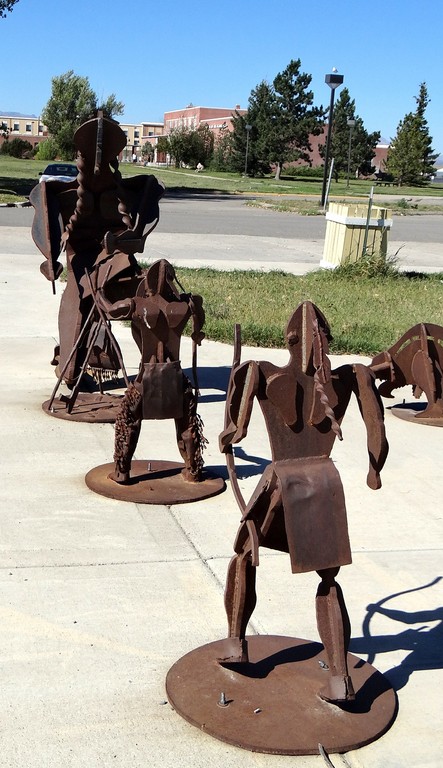
.
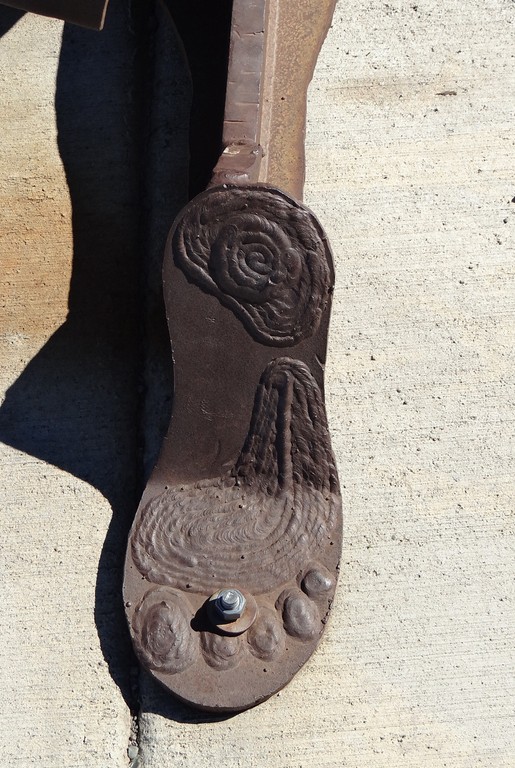
When I asked Stacey if she is Blackfoot, she answered vehemently, “No, I’m Blackfeet.” I believe Wikipedia has it wrong. But the steel foot is from the medicine man sculpture.
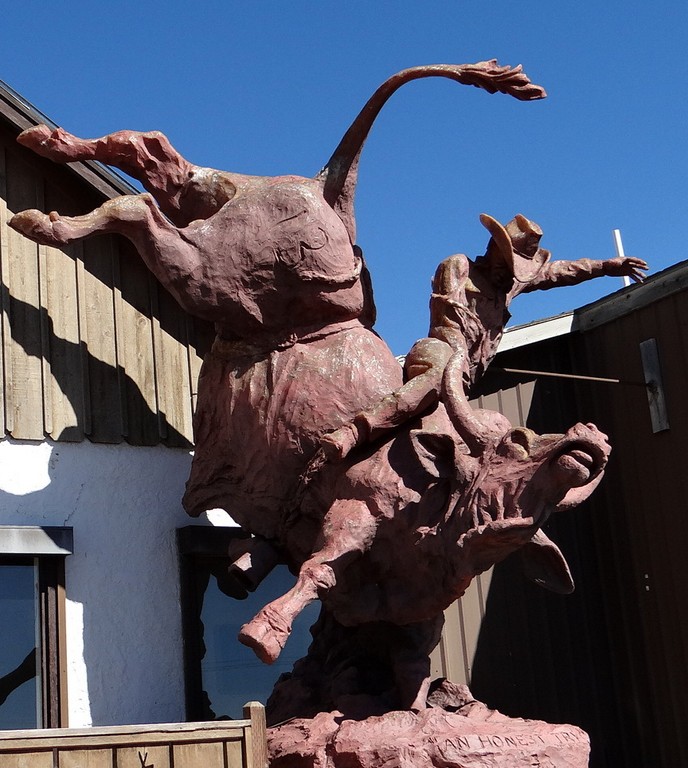
The Blackfeet Heritage Center Gallery can’t be missed. This huge steer wrangling statue sits in front of the building facing Highway 2. Inside, no pictures are allowed. They have a baby Tyrannosaur complete, coiled up in a circle with everything intact. It is from his “wishbone” (and others) that archeologists know birds are descended from dinosaurs. The fossil was found on Indian lands and can be studied by scientists, but it remains with its finders, the Blackfeet Nation.
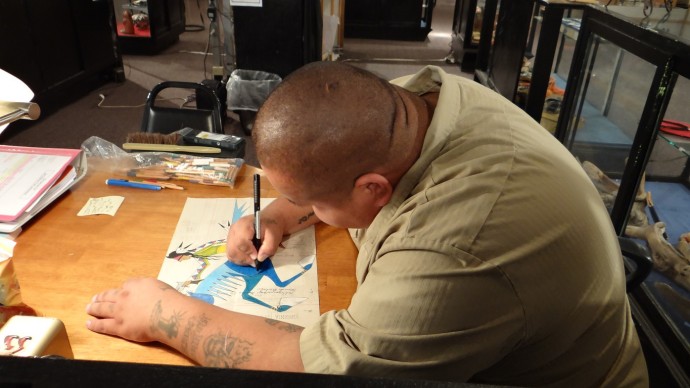
John Isaiah Pepion is a Blackfeet Artist who works at the Heritage Center. He is painting on an old ledger page instead of a clean piece of paper. I asked him why? He told me that tribes painted on stones, then graduated to buffalo hide and during the time when the government controlled them and imprisoned them, they were given old ledger sheets to draw on. Those are now called Ledger Art. He buys his sheets at antique sales or from flea markets. Work from several ledger artists was on display at the center, also very affordable.
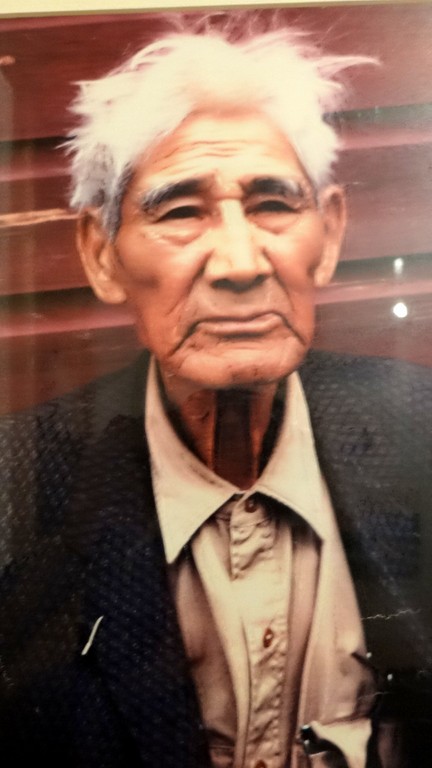
John Clarke is the Blackfeet, mute artist from the Cut Bank Museum we visited yesterday.
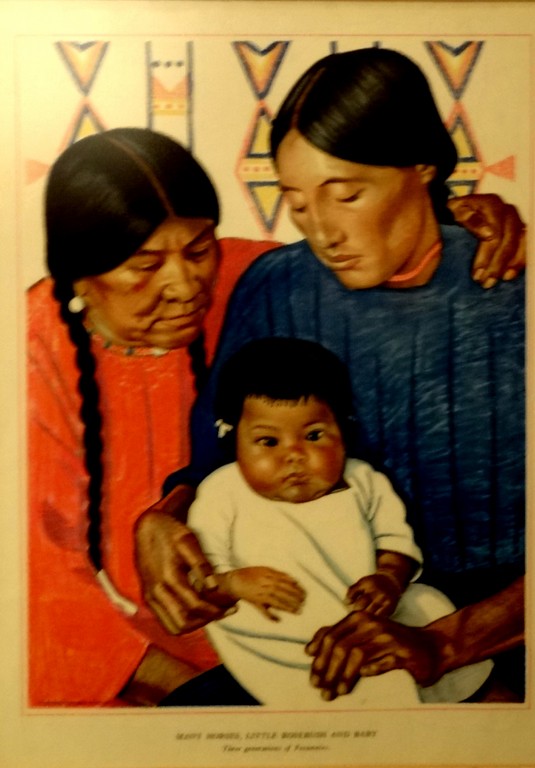
He painted his people.
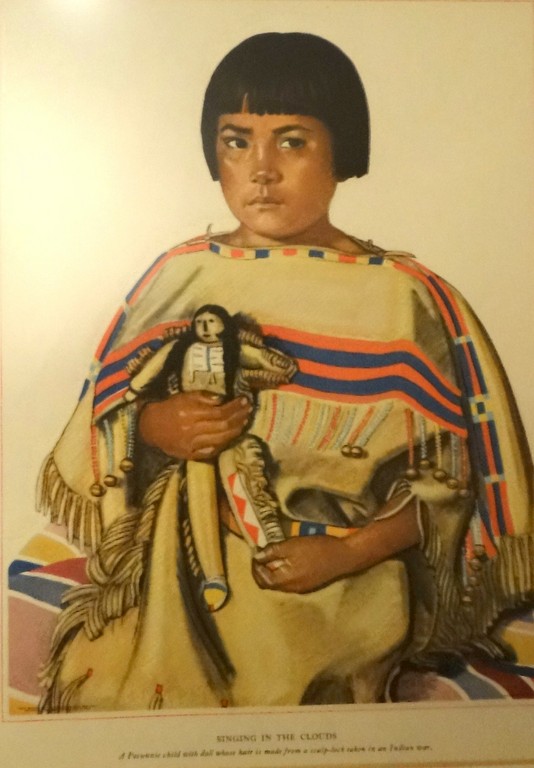
.

.
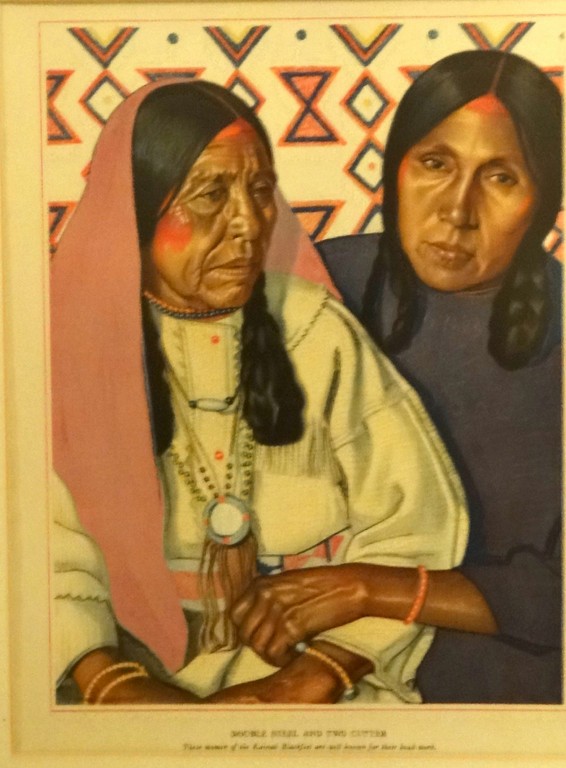
.
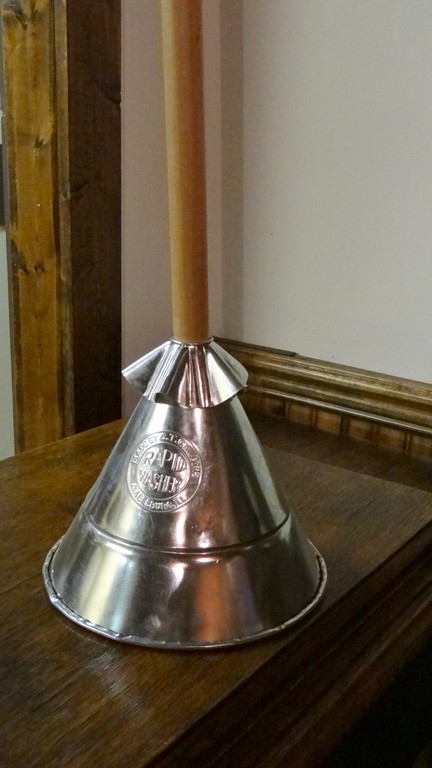
While I was rummaging around through yesterdays picture file, I remembered the one item I had never seen before was this Rapid Washer, a plunger used to agitate clothing in the wash tub to help clean them. (I forgot to post it.) So, there you are. The Native American people had their life style, their land, their heritage, even their food stolen from them. I can’t blame them for not wanting their designs stolen as well by refusing to have pictures taken in their cultural centers.
3 comments:
curry
golden goose
off white x jordan 1
yeezy boost 350 v2
air jordan 1
supreme clothing
birkin bag
golden goose
a bathing ape
supreme clothing
j6c85d2v28 v5k28y3j65 b4j29h0m32 t8m98i8s62 y3m65w4s64 z3w40y1l10
Post a Comment